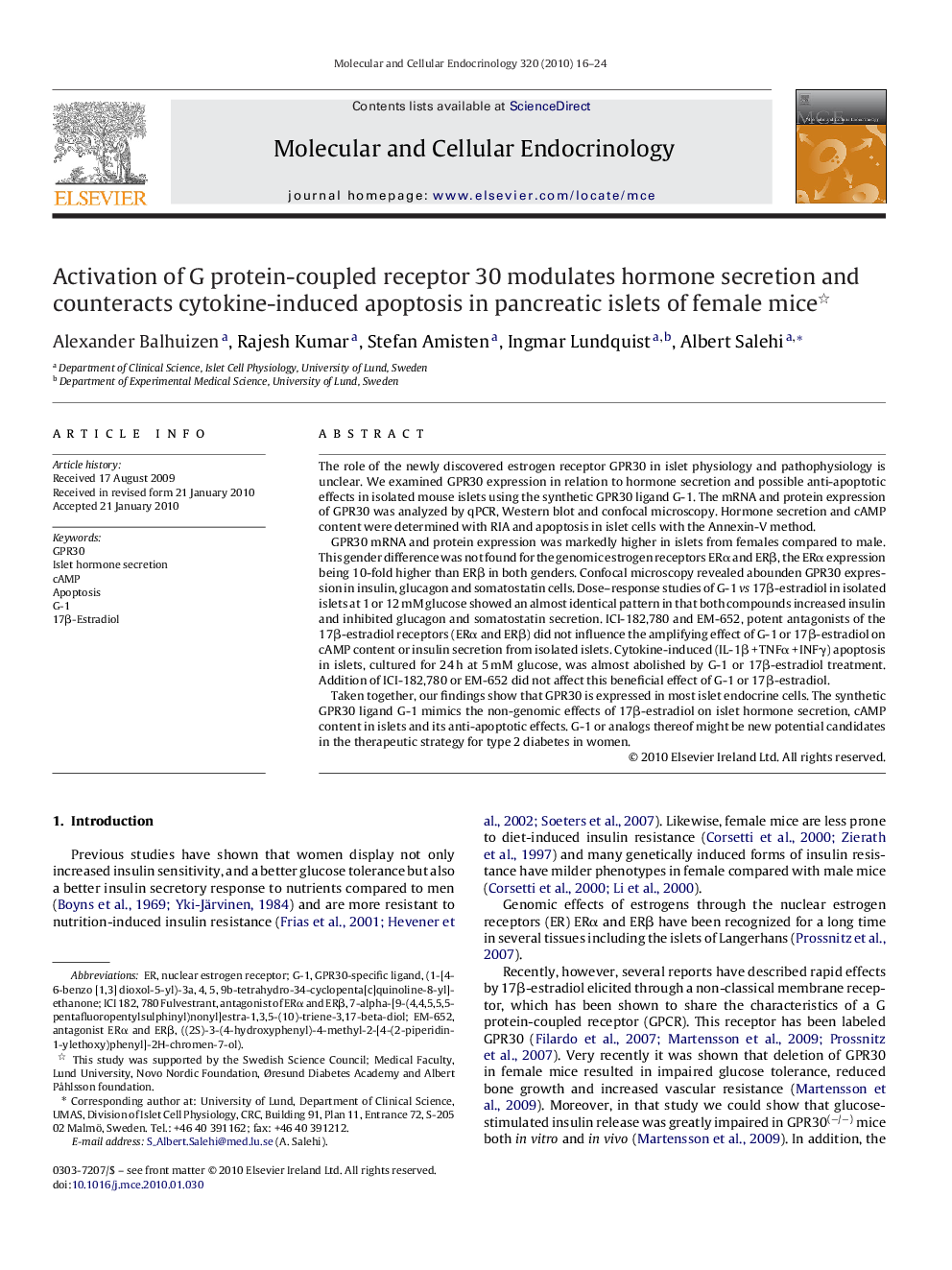| کد مقاله | کد نشریه | سال انتشار | مقاله انگلیسی | نسخه تمام متن |
|---|---|---|---|---|
| 2196897 | 1550945 | 2010 | 9 صفحه PDF | دانلود رایگان |

The role of the newly discovered estrogen receptor GPR30 in islet physiology and pathophysiology is unclear. We examined GPR30 expression in relation to hormone secretion and possible anti-apoptotic effects in isolated mouse islets using the synthetic GPR30 ligand G-1. The mRNA and protein expression of GPR30 was analyzed by qPCR, Western blot and confocal microscopy. Hormone secretion and cAMP content were determined with RIA and apoptosis in islet cells with the Annexin-V method.GPR30 mRNA and protein expression was markedly higher in islets from females compared to male. This gender difference was not found for the genomic estrogen receptors ERα and ERβ, the ERα expression being 10-fold higher than ERβ in both genders. Confocal microscopy revealed abounden GPR30 expression in insulin, glucagon and somatostatin cells. Dose–response studies of G-1 vs 17β-estradiol in isolated islets at 1 or 12 mM glucose showed an almost identical pattern in that both compounds increased insulin and inhibited glucagon and somatostatin secretion. ICI-182,780 and EM-652, potent antagonists of the 17β-estradiol receptors (ERα and ERβ) did not influence the amplifying effect of G-1 or 17β-estradiol on cAMP content or insulin secretion from isolated islets. Cytokine-induced (IL-1β + TNFα + INFγ) apoptosis in islets, cultured for 24 h at 5 mM glucose, was almost abolished by G-1 or 17β-estradiol treatment. Addition of ICI-182,780 or EM-652 did not affect this beneficial effect of G-1 or 17β-estradiol.Taken together, our findings show that GPR30 is expressed in most islet endocrine cells. The synthetic GPR30 ligand G-1 mimics the non-genomic effects of 17β-estradiol on islet hormone secretion, cAMP content in islets and its anti-apoptotic effects. G-1 or analogs thereof might be new potential candidates in the therapeutic strategy for type 2 diabetes in women.
Journal: Molecular and Cellular Endocrinology - Volume 320, Issues 1–2, 14 May 2010, Pages 16–24